The most expensive movies ever made
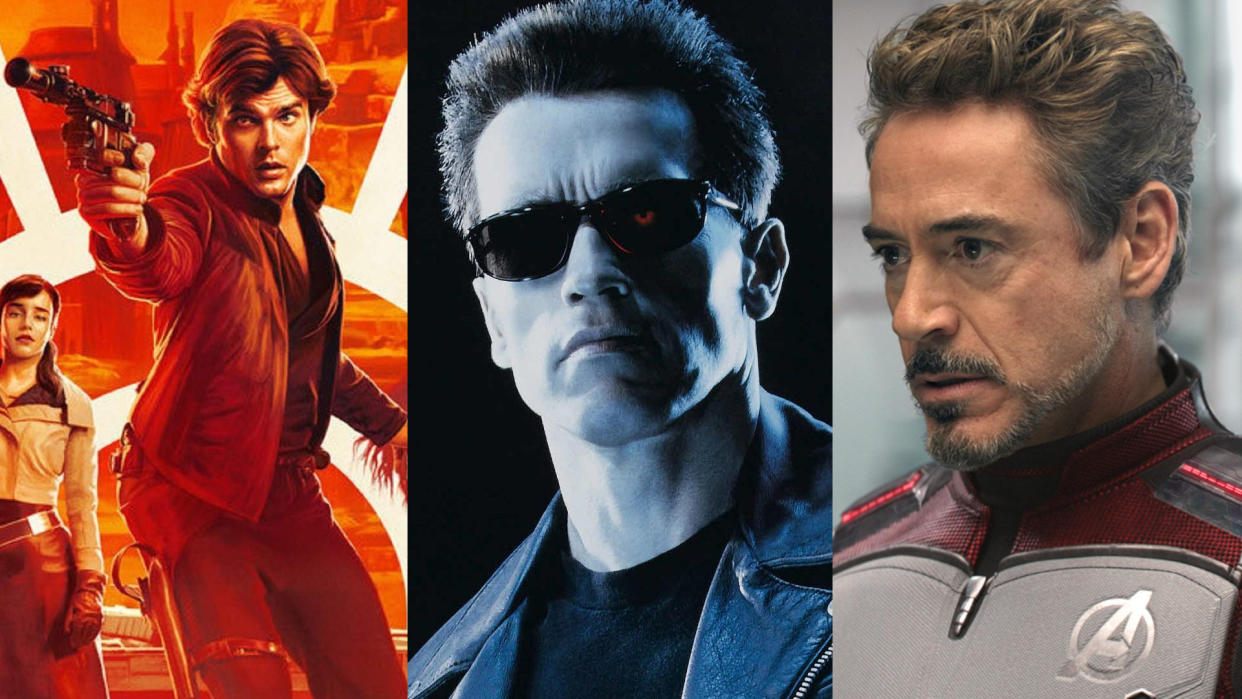
When it first hit cinemas in 1991, the hefty price tag of Terminator 2: Judgment Day made it the most expensive movie ever made, with an estimated budget in the region of $100m (£78m). It’s fair to say that the figure looks like small potatoes in the modern blockbuster market and was indeed smashed just three years later by True Lies — another collaboration between director James Cameron and star Arnold Schwarzenegger.
Does Arnie still reign supreme, or has he been usurped by spandex-clad superheroes and the drama of the galaxy far, far away when it comes to the most expensive movies ever made?
10. Batman v Superman: Dawn of Justice (2016)
Budget: $263m (£205m)
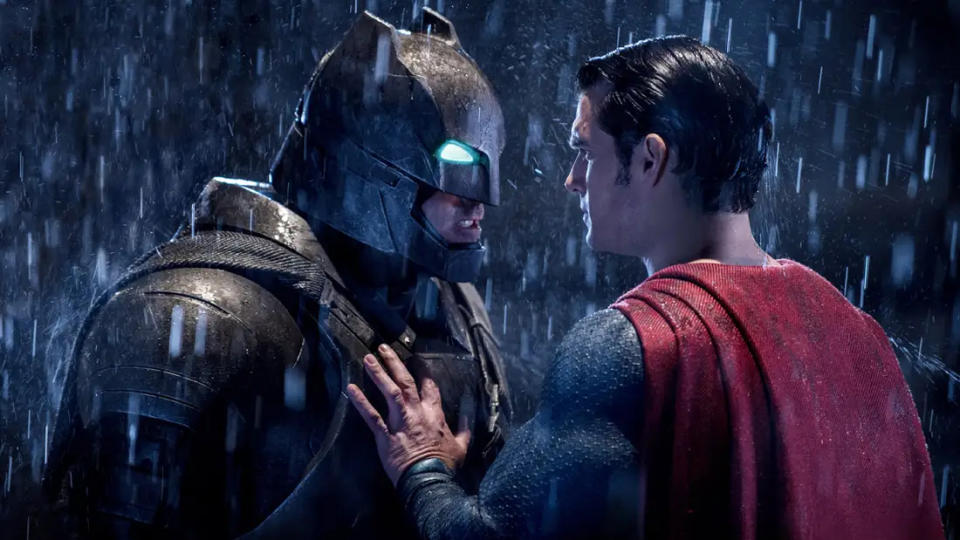
With Marvel already raking in billions of dollars through its cinematic universe, DC was in a hurry to create success of its own in 2016. Fortunately, the studio had a pair of aces in its hand in the shape of Batman and Superman — probably the two most recognisable big screen superheroes of all time. Their solution was to pit the two against each other, bringing together elements of Frank Miller’s comic book miniseries The Dark Knight Returns as well as portions of the acclaimed Death of Superman story arc.
The amount of spectacle necessary was always going to be expensive, and Dawn of Justice certainly throws absolutely everything at the wall. Zack Snyder’s trademark, grungy aesthetic was in full effect and the production spent the best part of $200m shooting the lion’s share of the film in Detroit, Michigan from May 2014.
Batman v Superman received largely negative critical notices, but also earned $874m (£681m) worldwide. This put the movie in profit, despite a marketing spend almost equivalent to the production budget, but it fell short of the billion-dollar total that DC and Warner Bros expected to receive, rendering it something of a financial disappointment.
9. John Carter (2012)
Budget: $264m (£206m)
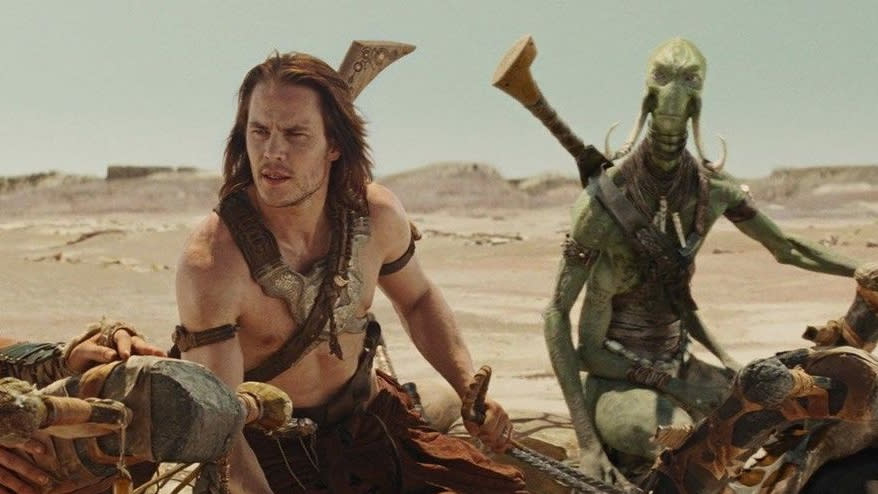
Adapted from a novel by Tarzan creator Edgar Rice Burroughs, John Carter was a big swing of a blockbuster from Disney, with beloved Pixar director Andrew Stanton at the helm. The movie was his live-action debut and it was him who pressed the Mouse House to secure the rights to Burroughs’ series. As debuts in the format go, this was a complex one, with more than 2,000 visual effects shots being delivered by four different companies.
Stanton claims he did not go over budget on the film, but he did admit that he reshot much of the movie twice. He attributed this to the fact he was used to animation, which provided more room to rework things at a later date. The original cut of the film was in the region of three hours, but the version that eventually hit cinemas was just over two.
With a largely unknown leading man in Taylor Kitsch, a fairly anonymous title — Stanton had removed the suffix “of Mars” from the original moniker — and a world seemingly redolent of other sci-fi properties, the movie was a tough ask for audiences. Critics were unimpressed and Disney lost $200m (£156m) on the project. As well as being one of the most expensive movies ever, it’s one of the biggest box office flops of all time.
=7. Solo: A Star Wars Story (2018)/Star Wars: The Rise of Skywalker (2019)
Budget: $275m (£214m)
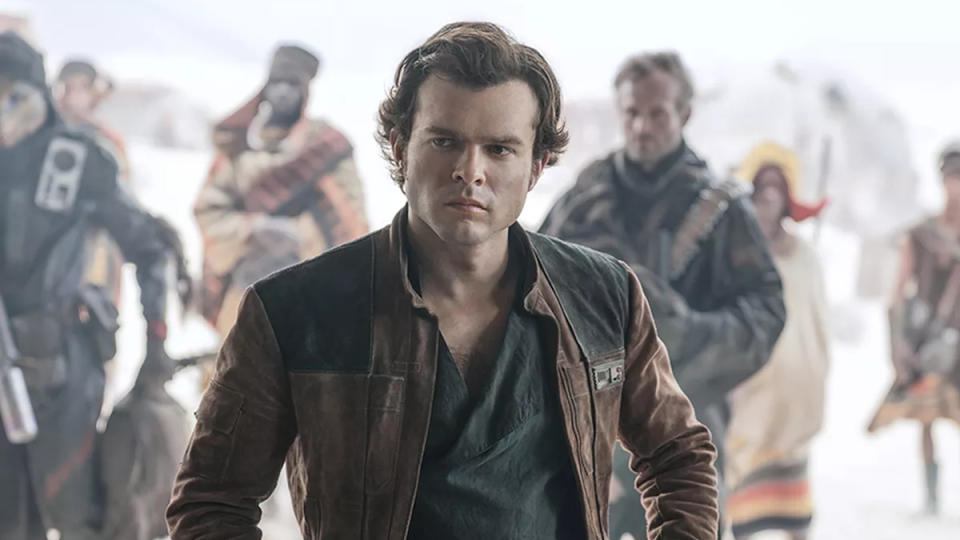
The making of John Carter seems like a walk in the park when compared to Solo: A Star Wars Story. Original directing duo Phil Lord and Chris Miller, of The Lego Movie and Jump Street fame, were sacked from the project after shooting for almost six months. Lucasfilm were reportedly upset at the comedic direction, fuelled by improvisation, in which they were taking the film and replaced the duo with Ron Howard. He helmed the final three weeks of principal photography, as well as five weeks of scheduled reshoots. Lord and Miller were ultimately credited as executive producers on the film, with Howard receiving sole director credit.
Given the turmoil behind the scenes, and the remnants of the backlash against The Last Jedi, it wasn’t too surprising when Solo ultimately turned out to be something of a box office and critical disappointment. A global box office total of $393m (£307m) was not enough to save the film, with Deadline estimating a $76.9m (£60m) loss for Disney.
Released a year later, JJ Abrams' Rise of Skywalker came with a similar price tag but did considerably better at the box office taking over $1bn.
5=. Justice League (2017)
Budget: $300m (£234m)
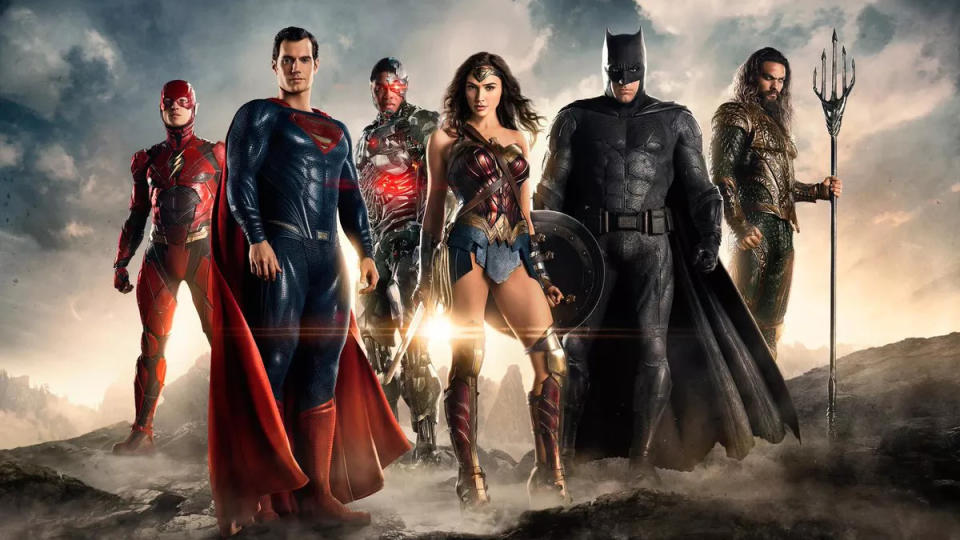
DC’s follow-up to Batman v Superman proved to be even more expensive, and even more chaotic, than its predecessor. Zack Snyder’s ambitious movie was rewritten extensively during filming and there were reports that Warner Bros execs were unhappy with the direction the film was taking, particularly in the wake of the adverse reaction to Batman v Superman. Snyder stepped down from the project during the post-production phase following the death of his daughter and was replaced by Avengers director Joss Whedon. He was given an unprecedented $25m (£19.5m) budget for two months of reshoots, during which Superman actor Henry Cavill infamously still had his moustache grown for Mission: Impossible — Fallout. The moustache had to be painted out using CGI.
Contradictory reports have suggested that Snyder might have been fired from the film, rather than choosing to leave, and mileage varies on how much of Justice League was altered by Whedon’s reshoots. The resulting movie proved to be a box office flop, making just $658m (£513m) worldwide, leading to an estimated loss for Warner Bros in the region of $60m (£47m).
Zack Snyder's cut of the film eventually saw the light of day in 2021, released as Zack Snyder's Justice League. It went straight to streaming, so it's unlikely to have made much impact on the film's bottom line.
5=. Pirates of the Caribbean: At World’s End (2007)
Budget: $300m (£234m)
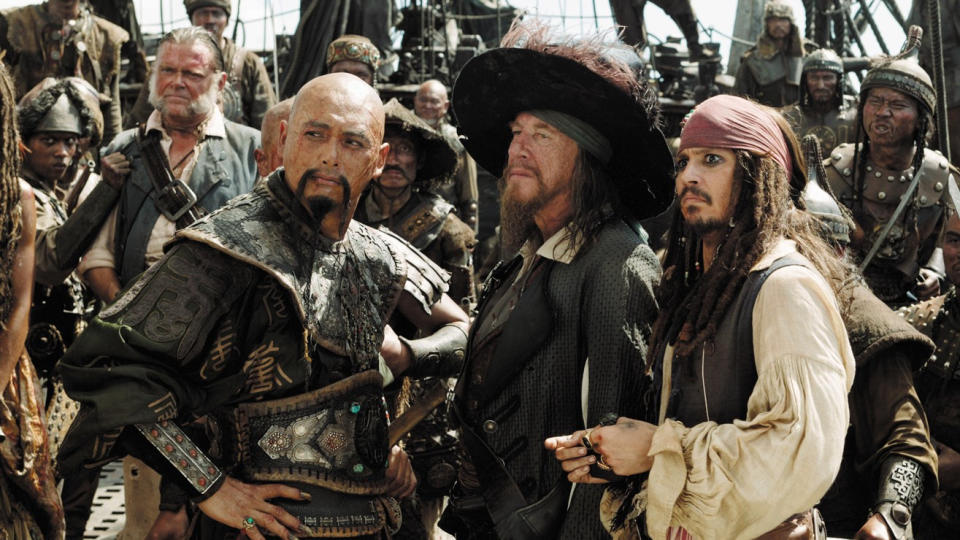
The Pirates of the Caribbean franchise has historically been one of the most financially lucrative in the Disney canon, with budgets ballooning due to the box office success of Johnny Depp’s rum-swilling swashbuckler Captain Jack Sparrow. Running close to three hours and boasting a truly epic scope, At World’s End was one of the most expensive entries of the lot.
Parts of the film were shot at the same time as previous movie Dead Man’s Chest, but an additional 70 days off the coast of California were allotted for this one. More than 1,000 effects shots were constructed by Industrial Light & Magic and Digital Domain to realise the myriad characters and locations of director Gore Verbinski’s world.
Fortunately for the studio, At World’s End was a success at the box office, bringing in $961m (£749m) worldwide. The total was less than Dead Man’s Chest, which broke the crucial billion-dollar barrier, but still made it the highest-grossing release of its year and kept the franchise chugging along.
4. Avengers: Infinity War (2018)
Budget: $316m (£246m)
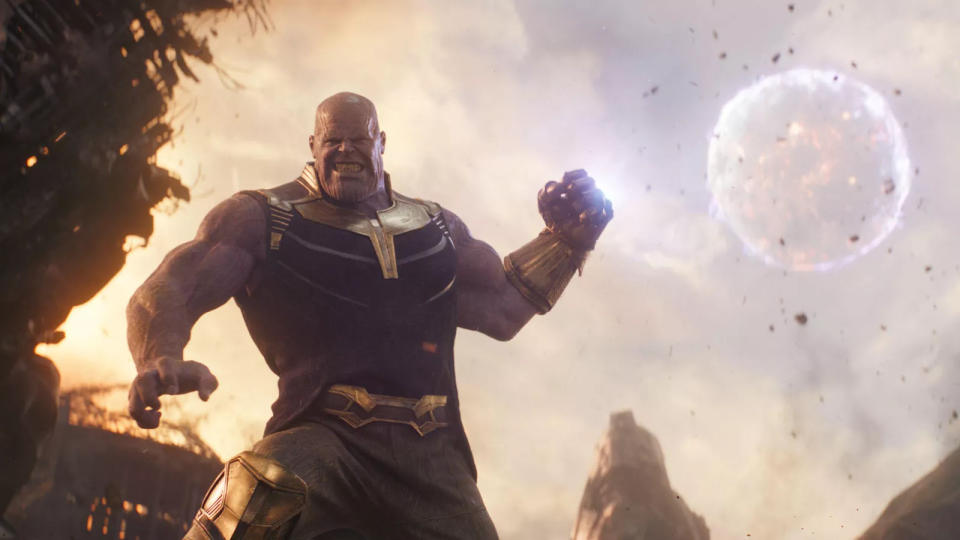
The Marvel Cinematic Universe is one of the most ambitious exercises in cinematic spectacle ever mounted — regardless of what Martin Scorsese might think — and so it was always going to appear on this list eventually. As the first part of the franchise’s monumental crescendo, Infinity War was a complex and pricey endeavour, culminating in the biggest battle sequence of the MCU at that time.
Initially, Infinity War and the then-untitled sequel — which would ultimately become Endgame — were due to film simultaneously, but the movies eventually shot back-to-back. The combined production was an endeavour of unprecedented size, with thousands of effects shots carried out by various production houses. It’s also significant to note the huge salaries of the gargantuan ensemble cast. All of those A-listers can’t have come cheap.
Avengers: Infinity War was, however, the safest of safe bets. The movie made $2.05bn (£1.6bn) globally and still sits as the fifth highest-grossing film of all time. The reviews from critics were ecstatic, the audience reactions were strong and there was a mouth-watering cliffhanger to keep fans on tenterhooks until the follow-up a year later. Speaking of which...
3. Avengers: Endgame (2019)
Budget: $356m (£277m)
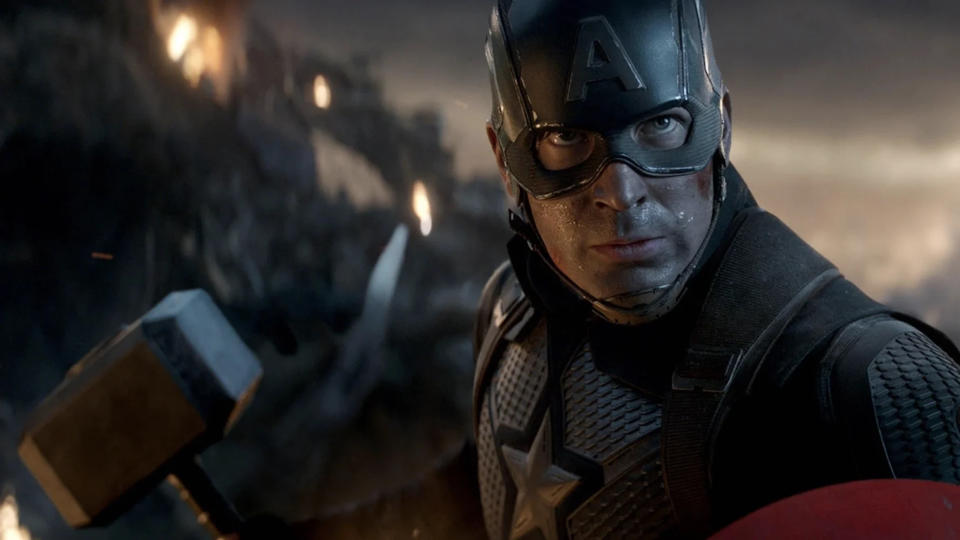
If Infinity War was an ambitious spectacle, then its follow-up took everything to another level entirely. Endgame starts as something of an intimate drama about the survivors of a horrific event, but its three-hour running time spins off in all manner of directions to produce something that is unparalleled in terms of scale.
Endgame contains more than 3,000 visual effects shots, contributed by around a dozen different companies, and also has the same uber-expensive roster of A-list actors that sent the cost of Infinity War soaring upwards. The climactic battle sequence crams in dozens of super-powered heroes, squaring off against Thanos and his alien army in explosive fashion. Extensive reshoots were carried out, including the emotionally potent “I am Iron Man” moment and the fate of Scarlett Johansson’s Black Widow.
The rest, as they say, is history. Avengers: Endgame now stands as the highest-grossing film of all time, with its $2.8bn (£2.2bn) worldwide total, smashing that of previous record holder Avatar — also directed by Cameron, the consummate veteran of expensive movie-making. Disney won’t be too worried about the budget in this case.
2. Avengers: Age of Ultron (2015)
Budget: $365m (£284m)
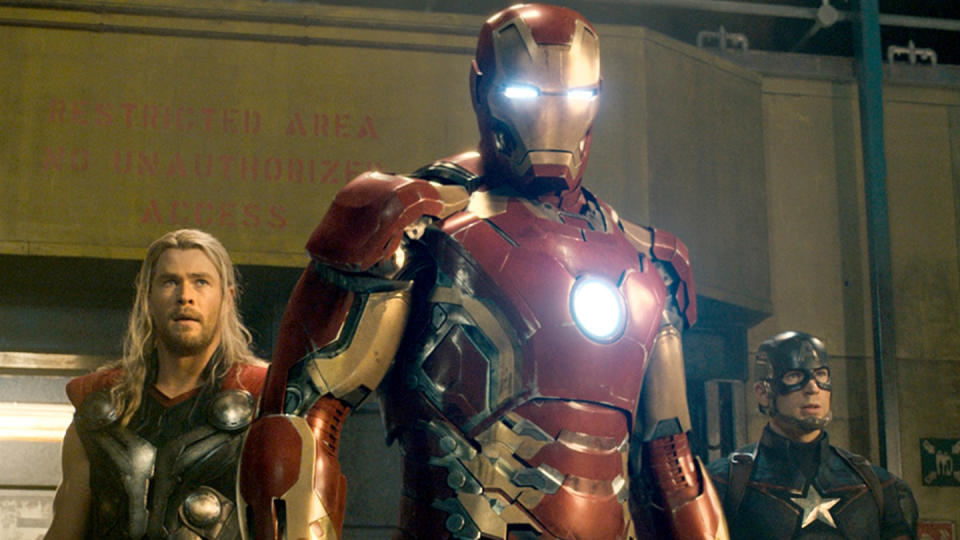
Somewhat surprisingly, neither Infinity War nor Endgame takes the crown for being the most expensive film in the history of the MCU. That title goes to Joss Whedon’s Age of Ultron, which proved to be a pricey endeavour as a result of chasing the immense success and approval which greeted The Avengers in 2012. Whedon’s sequel was aiming to be bigger, bolder and it inevitably contained even more heroes and villains than the team-up which came before.
The shoot was a globe-trotting experience, taking in Italy, South Korea and Bangladesh, as well as America and the UK. More than 3,000 visual effects shots were constructed. Whedon has since said in interviews that he found the experience to be exhausting, saying it was “weird” and “horrible” at times, despite his pride in the finished movie.
Age of Ultron made $1.4bn (£1.1bn) at the global box office, handing Marvel and Disney another bona fide win. They spent big and got exactly the return they wanted. The critical reaction was more muted than for The Avengers and few now count Ultron as among the best films in the MCU, but it justified its price tag as far as the execs were concerned.
1. Pirates of the Caribbean: On Stranger Tides (2011)
Budget: $379m (£295m)
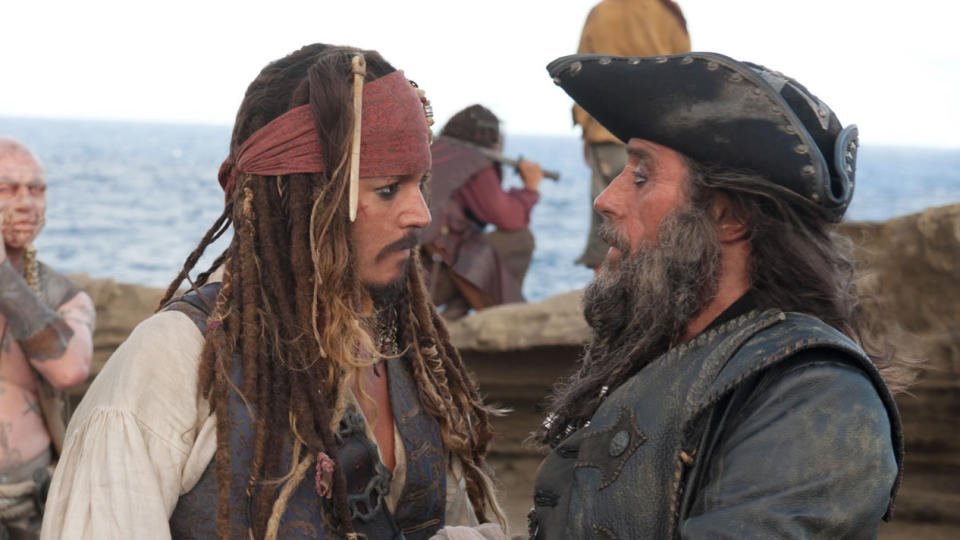
Disney considered At World’s End to be a big, expensive closer for the Pirates trilogy and so, when they decided to bring back Jack Sparrow for a fourth installment, they aimed for a budget less likely to break the bank. London and Hawaii were chosen as primary filming locations as a result of favourable tax breaks, while a tighter production schedule was agreed with new director Rob Marshall, replacing franchise veteran Gore Verbinski.
The costs soon ballooned, however. Johnny Depp was paid $55.5m (£43m) to return to the role and production had to move from Hawaii to California after, somewhat ironically, strong tides scuppered the original location. Marshall and cinematographer Dariusz Wolski opted to shoot almost the entire thing in 3D, rather than carry out a post-production conversion, managing to bring 3D cameras out into locations in a more ambitious way than any previous project.
On Stranger Tides crossed the billion-dollar barrier, bringing in $1.05bn (£819m), scoring a solid profit for Disney, despite the inflated production costs associated with getting the movie to the big screen. Eight years after it cinema screens, the movie still stands as the most expensive Hollywood production in history, even when adjusted for inflation. But will it maintain that crown?
Watch a trailer for Zack Snyder's Justice League

 Yahoo Movies
Yahoo Movies 
